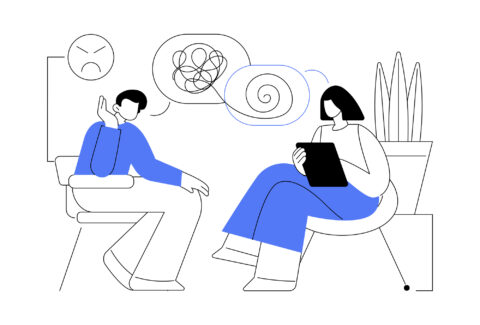Boundaries That Heal – The Power of the Treatment Frame
In the treatment of borderline patients, the therapist’s consistency is not rigidity—it is rescue. —Otto Kernberg
If you’ve ever worked with someone who swings between idealizing you and questioning your motives, you know that the work can be both deeply rewarding and incredibly destabilizing. What holds the therapy together when emotions run high, when attacks feel personal, or when chaos is knocking at the door?
The answer is not clever interpretations or diagnostic clarity. The answer is the frame.
In Transference-Focused Psychotherapy (TFP)[1], the treatment frame is not just a formality. It is a central therapeutic intervention—a structured holding environment where the client’s fragmented internal world can safely emerge, be understood, and ultimately be integrated.
The Frame as Psychological Shelter
At its core, the frame[2] includes:
- Consistent session times and length
- Clear boundaries around contact outside of sessions
- Defined expectations and responsibilities for both therapist and client
- A mutually agreed-upon treatment contract that includes rules around safety, payment, and suicidality
But these aren’t just bureaucratic procedures. They’re containers. They send the message: “This space is safe. This space is predictable. In this space, you are held.”
For individuals with borderline personality organization—who often grew up with unstable attachments and invalidating environments—the structure[3] of the therapeutic frame becomes a corrective emotional experience. It introduces a kind of reliability many have never known.
The Treatment Contract: Anticipating the Storm
The TFP treatment contract[4] is not optional or symbolic. It is essential.
Why? Because identity diffusion is often accompanied by dangerous behaviors—self-harm, suicidality, substance use, aggression, manipulation. These behaviors can rupture therapy, derail safety, and re-enact trauma if not addressed from the outset.
In the TFP model, the therapist doesn’t wait for these ruptures to happen. The contract anticipates them and addresses them up front.[5]
For example, a standard contract might include:
- A requirement that the client inform the therapist before engaging in any suicidal or self-harming acts
- Agreement on procedures if safety is compromised (hospitalization, consultation)
- Clarification on missed sessions, boundaries of contact, and roles within the therapy
The goal is not control. The goal is clarity, and to externalize the client’s internal conflict so it can be worked with, not acted out.
Holding the Frame When It’s Tested
And it will be tested.
A client might:
- Show up 20 minutes late to “see what you’ll do”
- Ask for your personal number “just in case”
- Miss sessions and blame you for not chasing them
- Accuse you of being cold, rigid, or uncaring
These are not signs of treatment failure. They are moments of transference activation. The client is re-experiencing early attachment dynamics in real time, with you as the object.
How you respond in these moments determines whether the therapy becomes a space of reenactment, or repair.
Holding the frame with warmth and firmness is not easy. But it is healing. It says, “I am not abandoning you. I am not collapsing with you. I am still here.”
Over time, this creates a deep, unconscious shift in the client’s internal world. The previously split objects, the nurturing and punitive parents, can begin to be integrated. And with that integration comes internal stability, emotional regulation, and a more cohesive identity.
The Frame Is the Therapy
In TFP, we don’t just interpret. We embody.
We become the stable object. We become the container that can hold love and hate, dependency and autonomy, chaos and control.
That’s the work.
And the frame? The frame makes it possible.
It’s tempting to loosen the boundaries out of empathy. But without the frame[6], the client doesn’t feel free—they feel unheld. For someone with a fragmented internal world, freedom without containment is terrifying.
TFP reminds us: therapy is not about meeting the client where they are. It’s about holding them in a way that lets them come home to who they are becoming.
[1] Levy, Kenneth N., et al. “Transference-focused psychotherapy (TFP).” Current treatment options in psychiatry 6 (2019): 312-324.
[2] Hersh, Richard G., Eve Caligor, and Frank E. Yeomans. “Fundamentals of Transference-Focused Psychotherapy.” Cham, Switzerland: Springer (2016).
[3] Yeomans, Frank E., Kenneth N. Levy, and Eve Caligor. “Transference-focused psychotherapy.” Psychotherapy 50.3 (2013): 449.
[4] Yeomans, Frank E., Jill C. Delaney, and Kenneth N. Levy. “Behavioral activation in TFP: The role of the treatment contract in transference-focused psychotherapy.” Psychotherapy 54.3 (2017): 260.
[5] Yeomans, Frank E., John F. Clarkin, and Otto F. Kernberg. Transference-focused psychotherapy for borderline personality disorder: A clinical guide. American Psychiatric Pub, 2015.
[6] Luca, Maria. “The therapeutic frame in the clinical context.” Integrative Perspectives. Hove & New York: Brunner-Routledge (2004).









